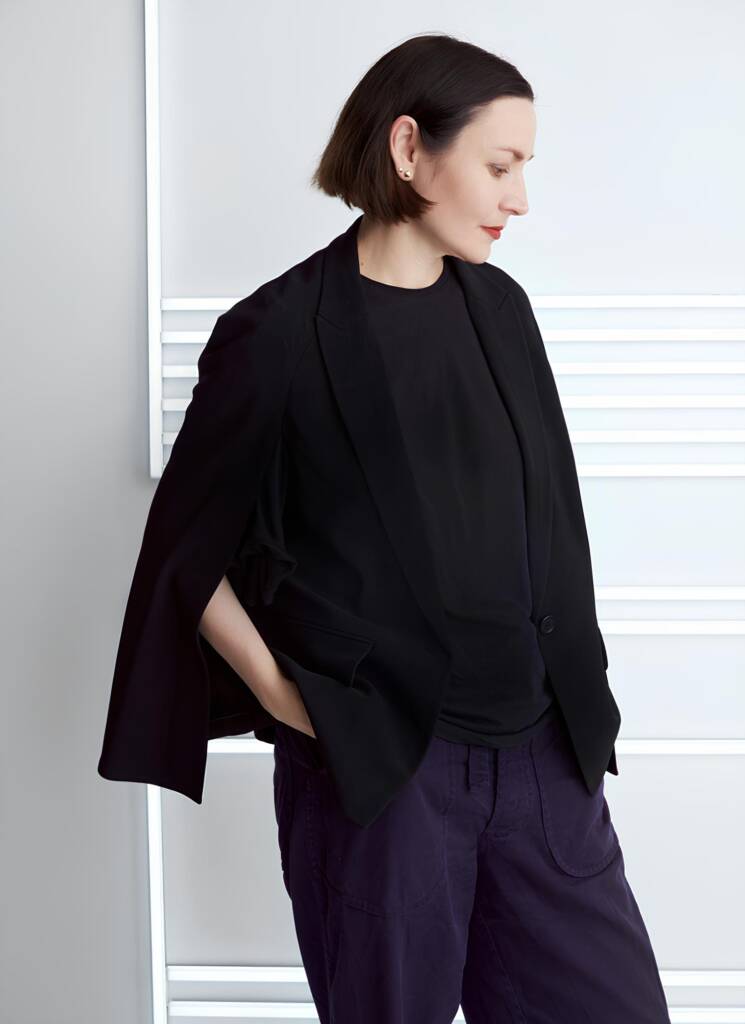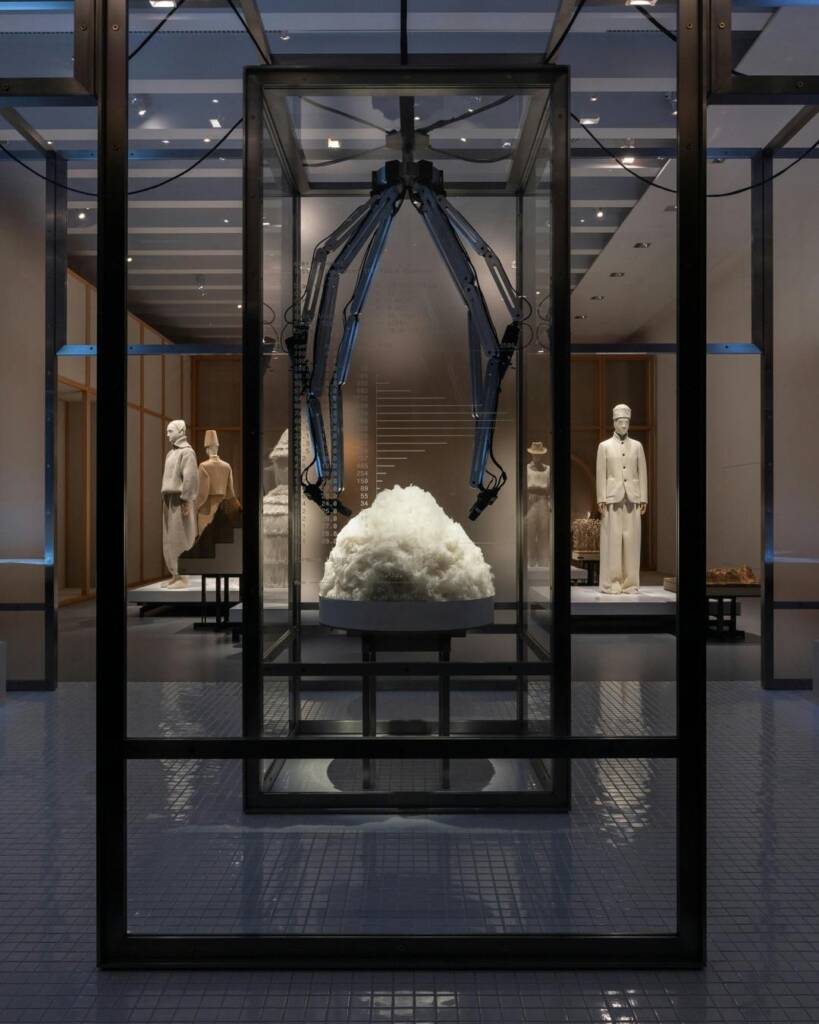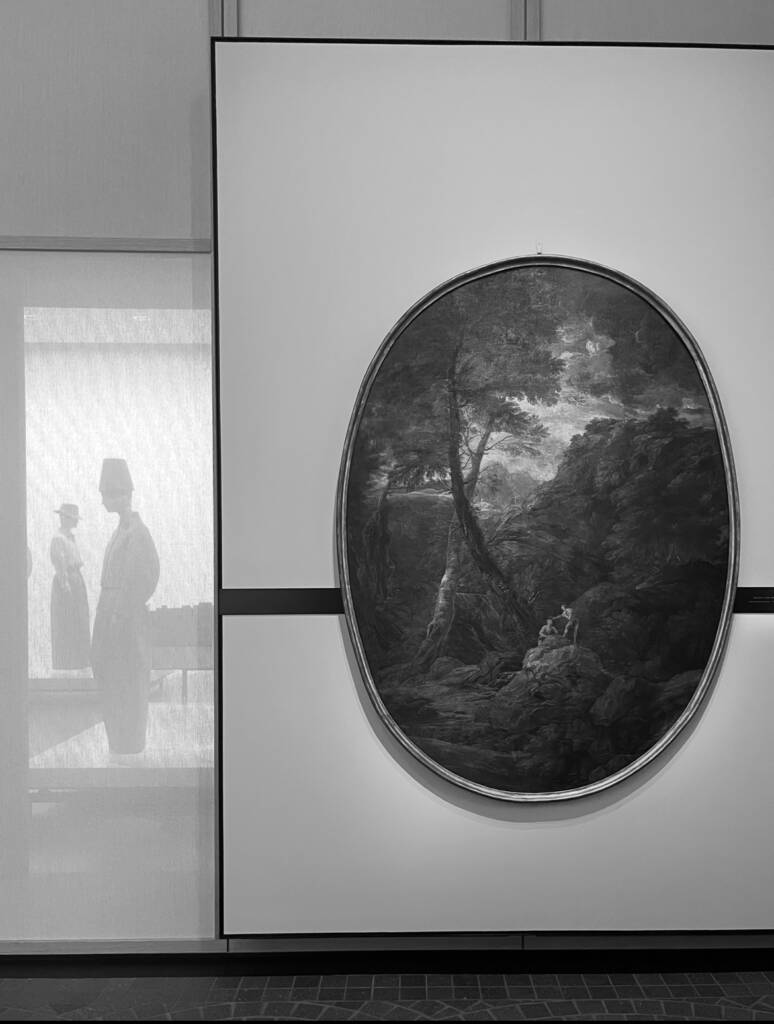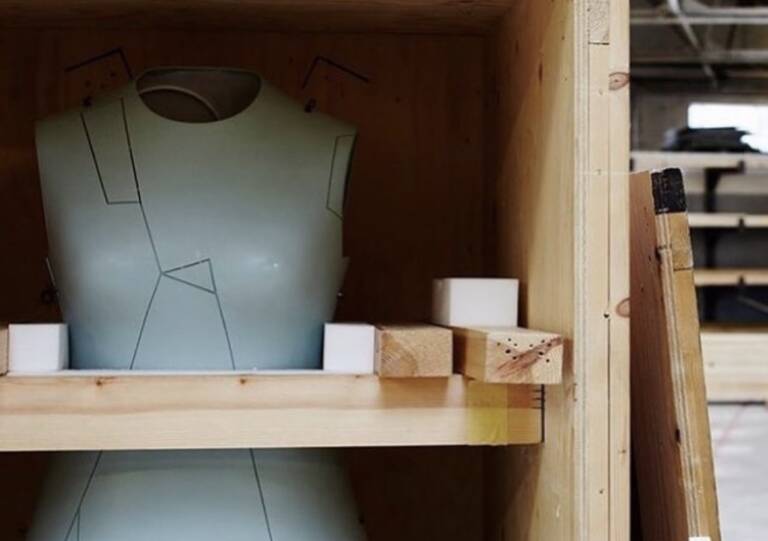


Courtesy of JUDITH CLARK
Judith Clark, Professor of Fashion and Museology at LCF, is reinventing how we engage with fashion in museum spaces. Known for her innovative exhibition-making, such as If You Know You Know: Loro Piana’s Quest for Excellence, Judith turns fashion displays into an immersive and experiential journey. With collaborations with designers like Hussein Chalayan and Christian Lacroix, Clark has continuously explored fashion’s relationship with history and modernity, challenging conventional museology. In this interview, Clark discusses her distinctive approach, from creating atmospheric experiences with Loro Piana’s tactile fabrics to redefining the concept of taste in fashion through The Vulgar: Fashion Redefined. Through her work, Judith Clark invites us to reconsider what fashion is and how it can be experienced and understood in museum settings.
hube: As a Professor of Fashion and Museology, how do you perceive the evolving relationship between fashion and art in the context of museum exhibitions?
Judith Clark: I think the conversation has shifted beyond recognition—it used to be a question asked about classification, or conceptual power, or the degree to which one or other was perceived as more commercial and so on; now there is a more nuanced dialogue within museum culture that allows the boundaries to be more porous. I look to the history of exhibition-making, and I take one of its forerunners to be installation art to inform my work so that the relationship you mention shifts beyond the object to its ability to be re-contextualised. We can move on via re-description, and for me, that is about re-presentation, quite literally.
h: You’ve described yourself as an exhibition-maker rather than a curator. Could you elaborate on this distinction and how it influences your approach to fashion exhibitions?
JC: I trained as an architect, so I work in the round, so it would be impossible for me to see an exhibition as a list of objects without using the opportunity to harness other associative (spatial) possibilities. This means that I am always considering which elements from my research become a prop, a motif, a surface, lighting, styling and so on. It is like building a detailed 3D essay that links the objects to a broader visual culture. Creating more experimental versions of this is central to my current work. It strays into a debate around the curator as an author or artist. I feel it is disingenuous to think of an exhibition setting as being neutral, but degrees matter, and I find this aspect of it interesting.
h: What was your overarching vision when curating If You Know You Know: Loro Piana’s Quest for Excellence, and how did you aim to encapsulate the brand’s century-long journey?
JC: The exhibition is about six generations of a family, an intimate story, and also a very big story if you think of the Maison’s reach now; there is, within it, the story about finding the finest fibre and the intimate work of breeding individual animals, and the complex processes of production: the story zooms in and out in time and space, and I found that really compelling as an element of the exhibition brief.
h: Loro Piana is renowned for its exceptional materials. How did you approach showcasing the tactile and sensory qualities of these fabrics within the exhibition space?
JC: Loro Piana was an ideal project around which to think about representing a story via means other than objects and text. The softness, the lightness, the light-heartedness, as well as the serious and compelling quasi-allegorical quest in the title, all lend themselves to ideas around atmospheres and about attention to every tiny material decision (I lined the walls in cashmere, for example, and gradually the floors as well, so the visitor was in a softer and softer space, quieter and quieter.) The story morphs from archival museology to enveloping the visitor – it also allowed the exhibition to mirror the century via changing attitudes to museum practices and expectations—from ideas around looking to more experiential practices.
h: Given Loro Piana’s long-standing relationship with Chinese cashmere producers since the 1960s, how did you integrate this cross-cultural narrative into the exhibition’s storytelling?
JC: I wanted to work explicitly with this relationship from the start—the exhibition reflects a strong and enduring relationship with China. I found various, I hope, poetic ways to reflect this through the notion of distance throughout the exhibition. I will give you two examples from the first and last rooms. First, upon entering the exhibition, you are standing in a room that resembles an Italian museum with masterpieces borrowed from the Pinacoteca di Varallo, local to Loro Piana’s HQ, as a homage to the host museum which borrows international museum art collections. The wall opposite the entrance has within it a panel of loosely woven textile that allows the visitor to look through to mannequins wearing dramatic silhouettes. Placed beside the mannequin closest to the panel is a scale model of Inner Mongolia—in miniature form, it looks further away and is blurred and softened by the textile—the blurring of details that occurs at a great distance. This is what exhibition-making can do; it can add rhetorical emphasis to an idea. The visitor sees where they are going but not yet in focus. The second example is the last room, which has a film projected onto eight screens. The film intersperses the footage from the collection and transport of fibre from China to Italy and the many hands it passes through with footage of the making of the exhibition—again zooming in and out from landscape to model. I commissioned the eminent composer Guo Wenjing to create a soundscape for the space that mixed traditional Chinese bamboo instruments with an Italian compositional structure, which he did with a small musical ensemble. The doubling runs through the exhibition.

